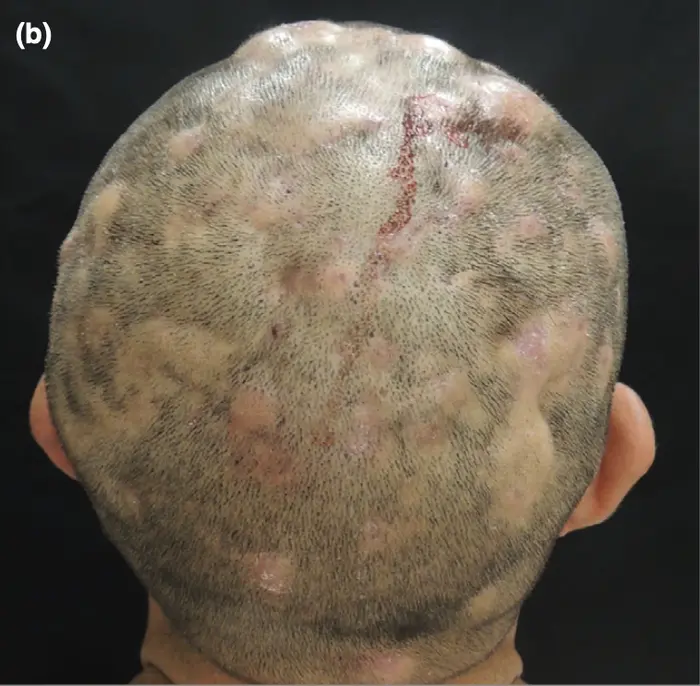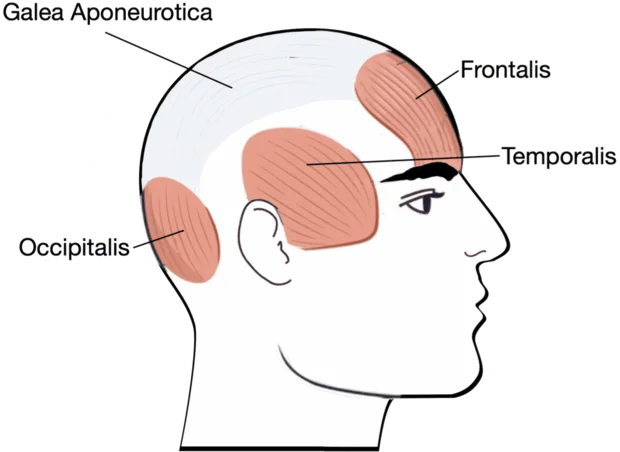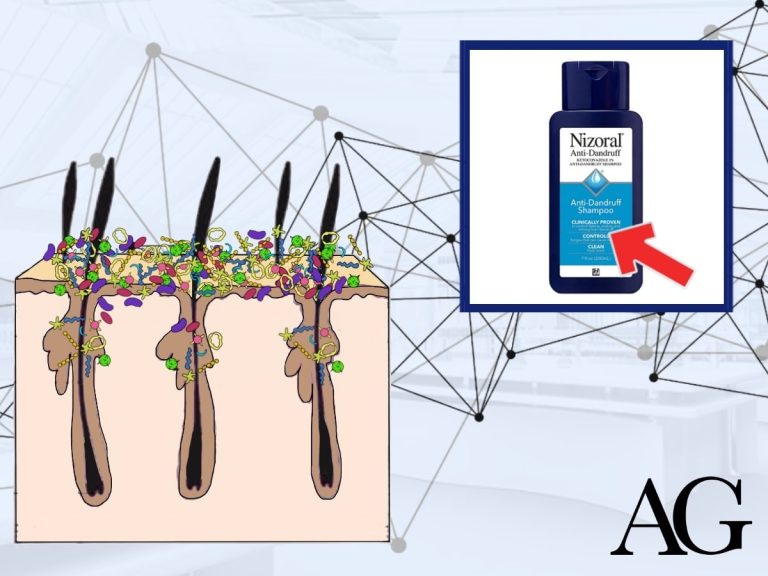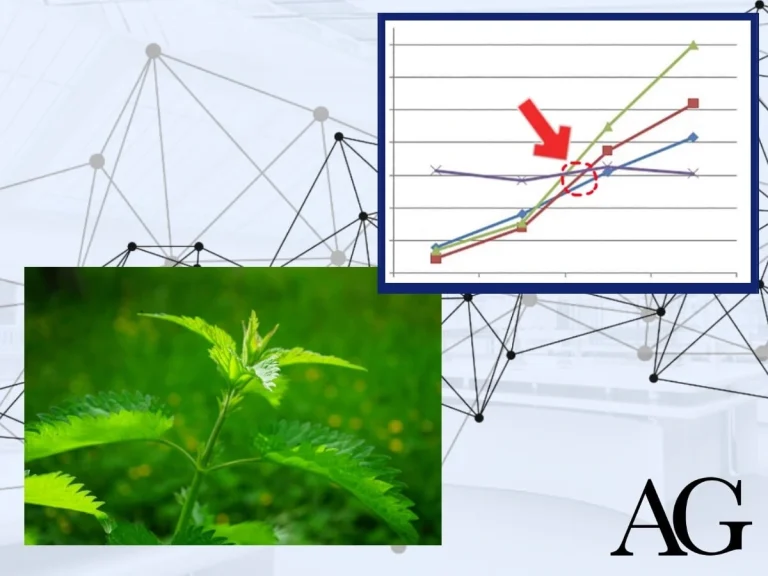With the rise of social media over the last couple of decades, unrealistic expectations and comparisons have led many young and often single men (or incels) turn to anabolic steroids in order to become more attractive and garner more attention.
But steroids are not without side effects. One possible side effect is hair loss.
This article explains what steroids are and how they can accelerate pattern baldness or hair thinning. We’ll also cover how steroid-related hair loss can be worsened and mitigated.
What are steroids?
Steroid hormones are organic molecules that our bodies produce naturally. That’s right – steroids are perfectly natural and healthy hormones. You may have heard of hormones like progesterone, aldosterone, testosterone, cortisol etc. These are all examples of endogenous steroid hormones.
Most steroids are derived from cholesterol. So, despite the villainization and demonisation of cholesterol throughout many blogs which grossly mis-interpret scientific research, cholesterol in healthy amounts is crucial for the your health.
As you probably already know, steroids can also be administered exogenously. There are 2 main types of exogenous steroids:
- Corticosteroids
- Anabolic-androgen steroids (AAS, more commonly known as ‘anabolic steroids’)
This article focuses on anabolic steroids and their effect on hair.
Exogenous anabolic steroids are synthetic compounds that can be administered orally or via an injection. These substances have a chemical structure that is very similar to the androgen hormone testosterone. This is important because androgenic alopecia (also know an pattern baldness) is driven in part by androgen hormones.
Anabolic steroids are basically a synthetic version of testosterone.
Anabolic steroids can be used responsibly to treat muscle wasting diseases or hormonal imbalances. As we all know, many gym-goers also take them to get ripped.
Anabolic vs. Androgenic effects
As the name suggests, AASs have anabolic and androgenic effects.
Anabolic effects promote anabolism. This refers to the skeletal and muscle-building properties of the substance. On the other hand, androgenic effects refer to the induction and maintenance of male secondary sexual characteristics.
| Anabolic | Androgenic | |
| Function | Tissue building and repair | Male sexual development and traits |
| Examples | Muscle growth, bone density | Beard growth, voice deepening |
| Target Tissues | Muscles, bones, liver, blood cells | Hair follicles, sebaceous glands, reproductive organs |
How do steroids cause hair loss?
Let’s recap how androgenic alopecia typically progresses. Free-flowing testosterone gets converted into it’s more potent metabolite dihydrotestosterone (DHT) by an enzyme called 5α-reductase. DHT binds to the androgen receptor in the dermal papilla cells.
Once DHT has activated the androgen receptor, proteins such as TGFβ-1 and DKK-1 are released. These proteins can shorten hair cycle length and cause hair follicle thinning over time.

Testosterone is said to be ‘reduced’ into DHT because the 5α-reductase enzyme changes the double bond between carbon-4 and carbon-5 in testosterone from a double bond into a single bond.
So, how do anabolic steroids cause hair loss?
Remember, anabolic steroids are a class of drugs that encompass many different substances. Not all anabolic steroids will have the same physiological impact on your body. For example, trenbolone may accelerate hair thinning in a different way to boldenone.
There are a variety of biological pathways in which anabolic steroids can accelerate hair thinning.
Androgen Receptor Activity
Various exogenous (produced outside the body) anabolic steroids can accelerate thinning in the same way as endogenous (created inside the body) steroids like DHT – by binding the the androgen receptor.
For example, anabolic steroids like Fluoxymesterone (sold under the brand name ‘Halotestin’) can directly attach to the androgen receptor. Androgen receptors are proteins located inside cells.
When Fluoxymesterone binds to the androgen receptors, it forms a steroid-receptor complex that undergoes a conformational change. This complex then translocates into the cell nucleus and binds to specific DNA sequences known as hormone response elements (HREs). The binding to HREs ultimately regulates the transcription of target genes, influencing their expression.
This is a signal for the body lay down fibrotic tissue (scar tissue) in order to resolve any inflammation which the body thinks is causing the high levels of androgen activity.
Simply put, the activated androgen receptor will induce hair thinning.

Whereas testosterone has to be reduced into DHT by 5α-reductase to exert hair thinning properties, fluoxymesterone does not (although it can).
DHT is only derived from testosterone. But 5α-reductase can produce structurally similar androgens from other steroid hormones. Here are some examples:
- Testosterone -> Dihydrotestosterone (DHT)
- Boldenone -> Dihydroboldenone (DHB)
- Fluoxymesterone -> Dihydrofluoxymesterone (DHF)
- Nandrolone -> Dihydronandrolone (DHN)
While DHB, DHF and DHN are not the same as DHT, they are structurally similar. So these steroids can still be harmful to your hair.

The 5α-reduced metabolite of some steroids are more androgenic than the precursor. For example, DHT is 2 to 3 times more androgenic than testosterone. This is why DHT is much more harmful to hair than testosterone.

However, in some other steroids, 5α-reduction actually makes the hormone less androgenic. For example, DHN is less androgenic than nandrolone.

While there is little data on this, it’s possible that taking a 5α-reductase inhibitor such as finasteride could actually worsen hair thinning in people taking nandrolone! This is because the reduced availability of 5α-reductase could prevent the conversion of nandrolone into a weaker metabolite.
It’s also worth mentioning that not all steroids have the same binding affinity to the androgen receptor. Here are some anabolic steroids ranked by binding affinity the androgen receptor:
- Mesterolone
- Methyltrienolone
- Nandrolone
- Methenolone
- Testosterone
Estrogen Imbalance
Estrogen is another hormone that plays an important role in hair health. This study explains that estrogen level decline can accelerate hair thinning.
We know that women who undergo menopause experience a decline in estrogen. This decline is often accompanied by some hair thinning. Furthermore, pregnant women tend to experience an increase in estrogen which is often accompanied by an increase in hair density.
On the other hand, elevated levels and estrogen has been observed in young males with pattern baldness.
Essentially, estrogen levels matter. So how does this relate to anabolic steroids? Well, estrogen hormones are derived from androgens via the aromatase enzyme.

And here we can see Androstenedione become aromatised into Estrone.

Not all steroids aromatise equally. Some steroids like testosterone and androstenedione can aromatise into estrogens. On the other hand, steroids like trenbolone or fluoxymesterone don’t aromatise into oestrogens.
Although the mechanism of action is disputed in the medical literature, it’s clear that estrogen binding to the estrogen receptor can have an impact on hair cycle duration. We also know that faster hair cycling can lead to faster hair miniaturisation. This is because hair thinning in androgenic alopecia takes place in between hair cycles.
Although the impact of changing estrogen levels on hair thickness is not as direct as androgens, this could be how some steroids like Androstenedione contribute to hair thinning.
Taking steroids can plummet the natural production of testosterone. This is why post cycle therapy (PCT) is recommended to normalise testosterone and estrogen levels after a steroid cycle. Taking steroids on a regular basis and then stopping abruptly could have wreck your hormonal profile and accelerate hair loss.
Beyond estrogen
Naturally, anabolic steroids can directly and indirectly interfere with many hormones other than androgens and estrogens. We know that balding men tend to have higher prolactin levels. Men with pattern baldness have also been observed to have lower FSH.
Anabolic steroids can increase prolactin levels and lower FSH. Correlation does not mean causation! However, it is worth mentioning that a correlation does indeed exist.
Inflammation and oxidative stress
This case study, reports a man who took anabolic steroids and shortly thereafter started noticing Dissecting cellulitis of the scalp (DCS). DCS is an inflammatory condition that can lead to disfiguring alopecia.

After stopping the steroids and taking isotretinoin 0.5 mg/kg daily, the DCS symptoms got much better.
Scalp inflammation plays a key role in pattern baldness. In fact, many studies suggest that balding scalps have elevated androgens as a response to chronic scalp inflammation.
An imbalance in testosterone to estrogen ratio is also associated with inflammation. Furthermore, declining estrogen levels during menopause can cause inflammation throughout the body. As mentioned above, this is usually accompanied by some hair loss.
Craniofacial development
So far, we have discussed the androgenic effects of steroids and how they could accelerate hair thinning. But what about the anabolic effects – could these be linked to hair loss too?
I wrote an article about the relationship between head shape and hair loss. Anabolic steroids can lead to muscle and bone growth. Could an increase in skull bone density or scalp perimeter muscle growth increase scalp tension, lower blood flow and accelerate hair thinning?
This study observed that nandrolone (an anabolic steroid) administered to rats led to “significant alterations” in facial morphology. So we know that in rats, steroids significantly alter facial growth. What about in humans?
Although not an anabolic steroid, Human Growth Hormone (HGH) is a performance enhancing drug often used by athletes alongside steroids. At a large enough dosage, HGH can indeed alter the size of your noggin.
This hormone, which is produced by the pituitary gland, normally stimulates bone and tissue growth throughout the body. Acromegaly is a rare condition where adults produce too much HGH.
Acromegaly has been shown to lead to modifications in volume and composition of the temporalis muscle.

We know that relaxing the temporal, occipital and frontal muscles with botox can lead to substantial hair growth according to this study.
So could the anabolic effects of AAS lead to hair loss?
In theory, you could draw a diagram illustrating a chain of cause-and-effect links that connect bone density changes caused by steroids to hair thinning.
BUT… this would be misinterpreting data because the truth is that we simply don’t have enough data to draw such conclusions. In reality, it is unlikely that anabolic steroid usage in adults can have significant enough effects on the head’s musculoskeletal system to cause any hair loss.
How to avoid hair loss with anabolic steroids?
Many articles say that nuking your 5α-reductase levels with finasteride or even dutasteride can prevent steroid-induced hair loss. As we’ve already discussed, this is not always the case.
Taking finasteride while on a trenbolone cycle won’t offer much protection against hair loss because trenbolone doesn’t get converted into a more potent metabolite by 5α-reductase.
In fact, 5α-reductase inhibitors could potentially increase hair loss if taken alongside steroids that get reduced to weaker metabolites (for example, nandrolone).
Taking finasteride won’t reduce the muscle building properties of testosterone since testosterone is more anabolic than DHT. In essence, if the parent hormone is already androgenic, finasteride won’t necessarily offer much protection.
In order to minimise your chances of hair loss while on a steroid cycle, you would have to carefully consider the following:
- Androgen index of chosen steroid
- Affinity to the androgen receptor
- Is the 5α-reduced metabolite more or less androgenic
- Can it aromatise
- Length of cycle
- Dosage
- Post cycle therapy
It is likely that taking testosterone is safer for your hair than say, halotestin. It would also be advisable to combat hair loss in a variety of ways. Check out the free ebook for more in this.
Naturally, there is a genetic element that will make different people experience different amounts of hair loss with the same steroid stack.
Steroid family tree
Steroids can largely be categorised into testosterone-based, DHT-based or nandrolone-based.
Anecdotally, DHT based steroids like winstrol or masterone are harsher on hair that testosterone. In fact, taking just testosterone is anecdotally one of the most hair-friendly steroids out there. Although, this steroid can also lead to hair thinning.
Steroids and hair loss in women
Hirsutism is a condition affecting some women where elevated levels of androgens lead to male-like hair growth. In other words, hirsutism can cause women to grow facial and body hair whilst leading to hair thinning on the scalp (we explain why this happens in our free e-book).
When women increase their levels of androgen hormones by taking exogenous anabolic steroids, this can lead to hirsutism. This can then lead to pattern hair loss.


